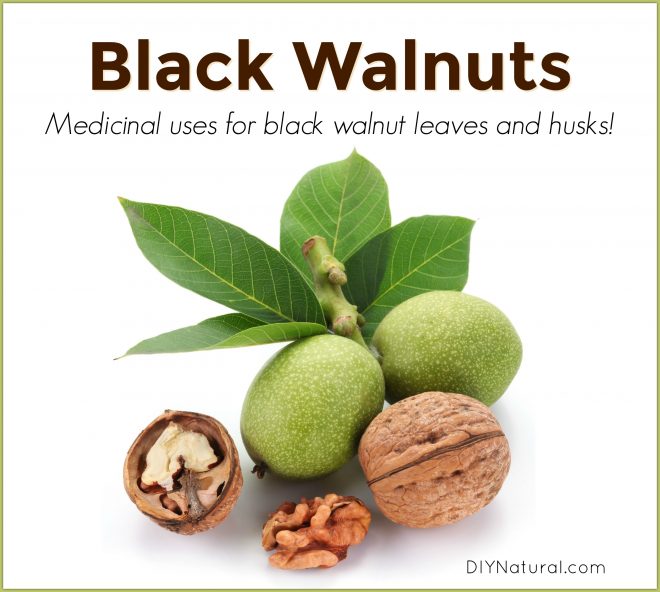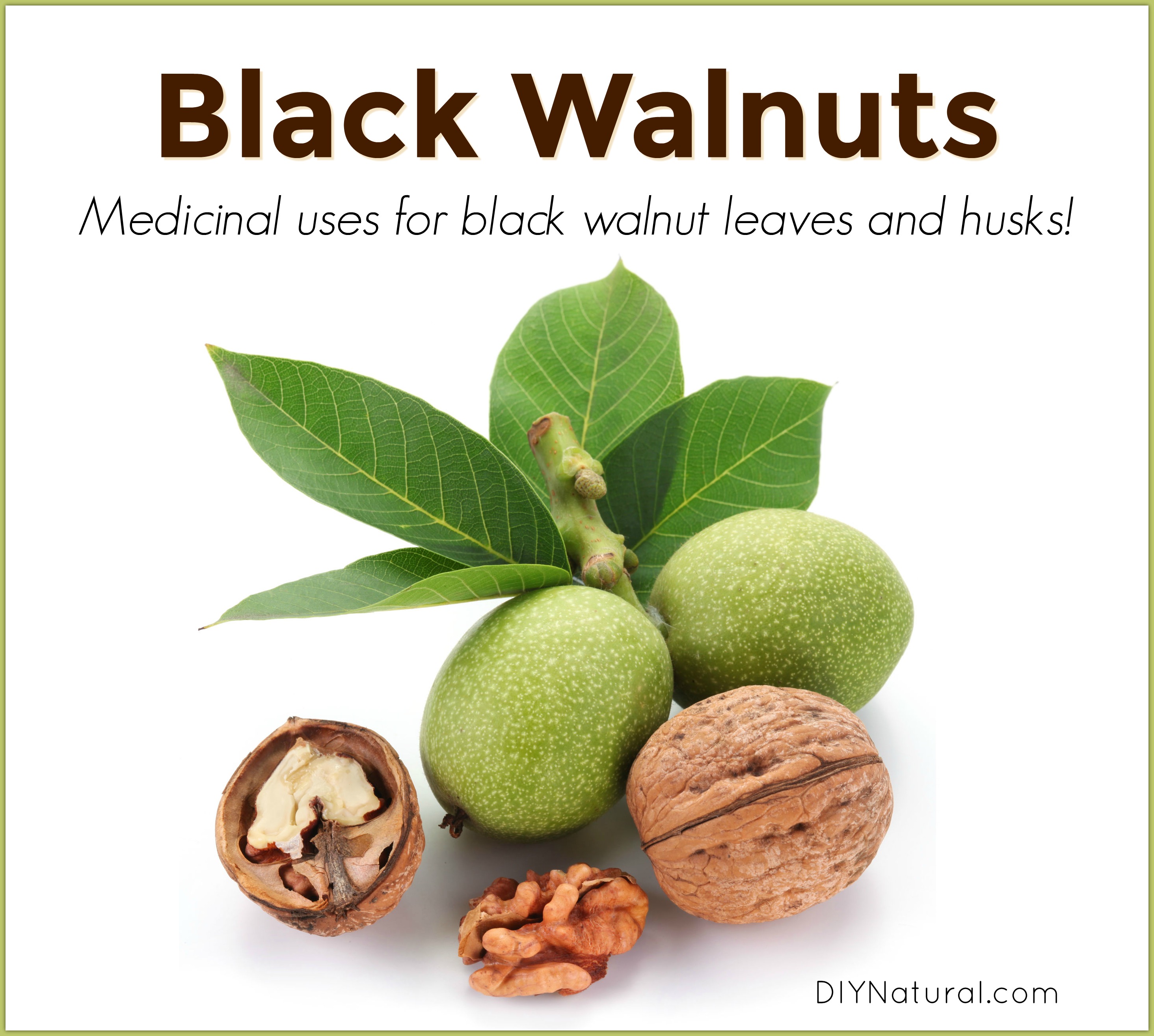
Last week, while sharing in the bounty of a friend’s apple tree, I spied a nearby black walnut tree (Juglans nigra) loaded with nuts.
Black Walnuts
While growing up, our neighbor had huge walnut trees that would drop ripe nuts by the hundreds. I remember walking across that yard, crushing them underfoot while smelling that earthy/citrus smell. That smell that is forever linked with cooler temperatures, blue skies, and crisp afternoons.
Because of this, black walnut is one of my favorite parts of fall!
Eating Black Walnuts
While I loved that smell, it wasn’t until I was older that I appreciated eating the nuts.
When I was working to rebalance my body after an infertility diagnosis, black walnuts became an important fertility food.
They contain that all-important Vitamin E and furthermore, in just 3 tablespoons you can eat your daily requirement of Omega-3 fatty acids.
Black Walnut Leaves and Husks
As I trained to become an herbalist, the tree took on yet another important role in my life. Black walnut has a long and well-deserved reputation for its healing qualities. Its bark, roots, leaves, nuts, and husks have all been used at different times. Today, it is mainly black walnut leaves, nuts, and husks that are used.
The first question I get when a student goes to harvest their own walnuts is, “What is the husk?” The second question is “When do I know it’s ready?”
The husk is the fleshy covering over the walnut shell. Inside the shell is the walnut (which is actually the seed).
Some herbalists recommend use of the husk while it is still green, but most refer to its use after it has turned black and is beginning to break down.
Harvesting the husk is a messy process. A walk under any walnut tree will quickly yield plenty of material. It is smart to wear gloves while harvesting and preparing your remedies since the hull yields a very effective black/brown dye.
The leaves can easily be harvested throughout the season for use in many applications.
Using Your Black Walnut Leaves and Husks
Using the Husks (powder or tincture)
Note: You can follow this basic procedure for making a tincture.
A tincture or powder made from black walnut husks is useful in treating the following ailments:
- hypothyroidism
- gallbladder congestion or stones
- digestive problems (diarrhea or constipation)
- intestinal worms
- fungal skin infections on skin (athlete’s foot, ringworm)
- acne
Using the Leaves (tincture)
Note: You can follow this basic procedure for making a tincture.
A tincture made with black walnut leaves is useful in treating the following:
- ringworm
- acne
- eczema
If you pass by a walnut tree, be sure to stop and smell its distinctive fall aroma. It offers much more than just a healthy and delicious nut.
*******




Hi Dawn, you are doing a great work here.
I have a few, quick questions to ask, hope you’ll find time to answer.
I live in one of the third world countries and I’ve been thinking about going into agriculture. Before, I intend to do this for business purpose like growing Cashew and selling after harvest. But reading this post, I see that I can also benefit a lot if I can plant things like walnut – for their medicinal benefits.
What advice could you give me – from your experience – regarding planting this? How long will it take and maybe idea how much it might cost for the initial set to plant?
Thanks…
Solas
We have a Black Walnut tree in our yard. Two years ago, we picked up over 1000 walnuts and took the husks off. Layed them out to dry, and made a winter project of cracking them and taking the nut out. Vacuum sealed them one cup to a bag. Put them in the freezer and now have delicious walnuts for baking and just eating right out of the bag.
Detailed dosing info for the finished tincture would be appreciated. # T for an adult would be too much for a child?
I do not see any warnings in this article showing black walnut ought to be used with caution for those with nut allergies or that some parts of the plant (ground shell) can be downright toxic if overdosed. I feel it deserves a mention because not everyone will DIY, just go to the bulk foods and buy something off the shelf.
Hi Aurora,
Thanks for your concern, but it would be completely inappropriate for me to suggest “dosing” information in this format. Every body is different and every situation as well. This article is intended to shed some light on the uses of black walnut with the hope that it would inspire you to look into the specifics of its use in your own situation. As for the allergy information, anyone with a nut allergy concern is already way ahead of that (knowing that walnuts are well, nuts) and have done more research than I could possibly print here.
Hi Dawn, is there a difference between English Walnuts and Black Walnuts? And which one do you prefer? Thank you for sharing this with us.
Hi Charlice,
A great question! It is the english walnut we most often get in commerce today… it seems to have a higher level of omega-3’s than black walnut, but otherwise is not too much different. If you read old English herbals, it appears they are taking about the use of Juglans regia. Most of today’s herbals that are written here in the US will be talking about black walnut. As far as I can tell, they are relatively interchangeable though i can’t answer definitively. There appears to be quite a mix-up in the history of the walnut as it traveled around the planet. You’ve made me curious… it might be that there could be a difference in how the two walnuts were used… maybe more leaf use in Europe and more husk use in North America. Only plant geeks like me might be interested in such information! Overall, I would say that there should be a similarity of phytochemicals with only minor variations between the two species. Thanks for asking!!
There are very few similarities between english and american black walnuts. They do not look open or taste alike.
The picture is not black walnuts. Those are English Walnuts.